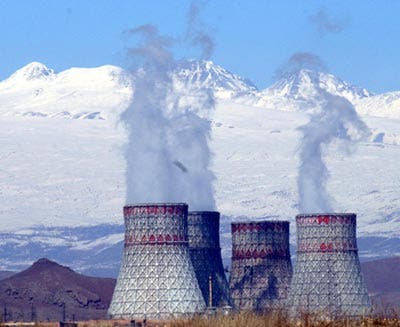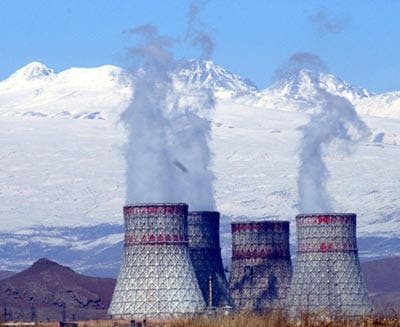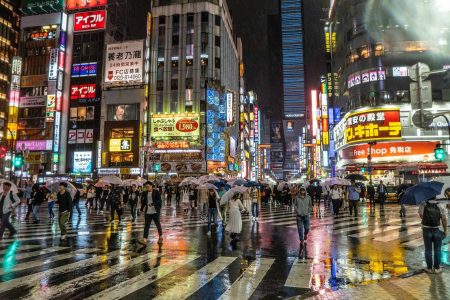
In light of recent catastrophic events that plagued Japan, and the consequent nuclear crisis recently raised to level 7 on par with Chernobyl, the talk of the day in every scientific and political circle seems to be that of nuclear safety. Armenia’s 31-year old only nuclear power plant located in Metsamor is one of the few remnants of the old soviet nuclear reactors built without primary containment structures. Only a few of these first generation water-moderated reactors are still in use today, being past or near their original retirement ages, but what sets the Metsamor facility apart from all the others is the fact that it’s located in a potentially hazardous seismic zone.
Seven years ago, the European Union called the facility “a danger to the entire region,” but Armenia later turned down the EU’s offer of a 200 million euro ($289 million) loan to finance Metsamor’s shutdown. The same thing was underlined by the United States government as well, which has called the plant “aging and dangerous,” and urged construction of a new one.
How could the Armenian government afford to close the power plant, though, considering that 40% of the countries energy output comes from Metsamor? For the more than 3 million Armenians the Metsamor power plant is more than a simple industrial electricity facility, it’s a symbol – the symbol of light.
“People compare the potential risk with the potential shortage of electricity that might arise if the plant were closed,” says Ara Tadevosyan, director of Mediamax, a major Armenian news agency. “Having had this negative experience, people prefer to live with it, and believe that it will not be damaged in an earthquake.”
Seven years ago, the European Union’s envoy was quoted as calling the facility “a danger to the entire region,” but Armenia later turned down the EU’s offer of a 200 million euro ($289 million) loan to finance Metsamor’s shutdown. The United States government, which has called the plant “aging and dangerous,” underwrote a study that urged construction of a new one.
Metsamor is located right in the middle of one of the world’s most active and strong seismic zones that stretches in a broad swath from Turkey to the Arabian Sea near India. On December 10, 1988, a 6.8-magnitude earthquake struck, killing 25,000 people and leaving 500,000 homeless. Luckily, some 60 miles (100 kilometers) from the epicenter, Metsamor, then with two operating reactors, survived the temblor without damage, according to Armenian officials and the International Atomic Energy Agency (IAEA). The Soviet government soon shut the nuclear plant down after the earthquake afraid of a calamity, especially since back then the Chernobyl incident was still very terrifyingly fresh in everybody’s minds.
In 1995 the government of then-independent Armenia decided to restart the younger of the two reactors, finally ending a period of hard seven years in which most of the population was blacked out.
When the unit restarted, “It became a source of energy and a source of hope for Armenia,” explained Tadevosyan. “It was a symbol that dark times are over: ‘We have electricity.’ And it is still seen as such today.”
The Metsamor reactor is much safer than the original unit that went into service at the site on January 10, 1980 however as close to 1,400 safety improvements have been made. Those included “seismic-resistant” storage batteries, reinforcement of the reactor building, electrical cabinets and cooling towers.
While global authorities believe the Metsamor reactor is still unsafe and should be shut down, the Armenian government and other independent entities think otherwise.
“Metsamor is no less safe than any other reactor in operation throughout the world,” said Nuclear engineering expert Robert Kalantari, whose Framingham, Massachusetts, firm, Engineering Planning and Management, consults for U.S. and Canadian regulatory authorities,. “Armenia as an independent country cannot survive without [Metsamor], which is a functioning, safe, and reliable source of energy for the country.”
Story via National Geographic.









